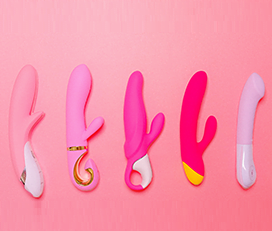The Ultimate Guide to Condoms: Everything You Need to Know
Introduction
Condoms are one of the most popular and effective methods of contraception and protection against sexually transmitted infections (STIs). Whether you’re a seasoned user or just starting to explore your options, understanding the ins and outs of condoms can help you make informed decisions about your sexual health.
Why Use Condoms?
- Protection Against STIs: Condoms are highly effective in reducing the transmission of STIs, including HIV, chlamydia, gonorrhea, and syphilis.
- Contraception: When used correctly, condoms are 98% effective at preventing pregnancy.
- Accessibility and Convenience: Condoms are widely available without a prescription and come in various types to suit individual preferences.
- No Hormonal Side Effects: Unlike some other forms of contraception, condoms do not affect your hormonal balance.
Types of Condoms
- Latex Condoms: The most common type, offering excellent protection against STIs and pregnancy. Note: Some people may have latex allergies.
- Polyurethane Condoms: A good alternative for those with latex allergies. They are thinner but slightly less flexible.
- Polyisoprene Condoms: Another latex-free option that is softer and more flexible than polyurethane.
- Lambskin Condoms: Made from natural membrane, they offer a natural feel but do not protect against STIs, only pregnancy.
- Textured Condoms: Designed to enhance pleasure with features like ribs and studs.
- Flavored Condoms: Ideal for oral sex, adding a pleasant taste while providing protection.
- Ultra-Thin Condoms: For those seeking a more natural sensation while maintaining protection.
How to Use a Condom Correctly
- Check the Expiry Date: Always ensure the condom is within its use-by date.
- Inspect the Packaging: Make sure the package is intact with no damage.
- Open Carefully: Tear the package at the edge, being careful not to damage the condom with nails or teeth.
- Pinch the Tip: This leaves room for semen and reduces the risk of breakage.
- Roll it On: Place the condom on the tip of the erect penis and roll it down to the base. Ensure it’s rolled on the right way.
- After Ejaculation: Hold the condom at the base while withdrawing to prevent it from slipping off.
- Dispose Properly: Tie the open end, wrap it in tissue, and dispose of it in a trash bin (not the toilet).
Common Condom Myths Debunked
- “Condoms always break”: When used correctly, condoms are durable and rarely break. Ensuring proper storage and usage is key.
- “Two condoms are better than one”: Using two condoms at once can cause friction, increasing the chance of breakage. Stick to one.
- “Condoms reduce pleasure”: Modern condoms are designed to maximize sensitivity. Ultra-thin and textured options can enhance pleasure.
Tips for Enhanced Experience
- Use Lubrication: Water-based or silicone-based lubricants can reduce friction and prevent breakage. Avoid oil-based lubricants with latex condoms.
- Experiment with Different Types: Find what works best for you and your partner by trying various textures, sizes, and materials.
- Communicate: Talk with your partner about preferences and comfort to ensure a mutually satisfying experience.
Quick Links: Okamoto Condom, Liquid Condom, Durex Condom, Sensation Condoms, Spiked Girth, Penis Sleeve Condom, Minglui Condoms, Silicone Shaft Condom,
Conclusion
Condoms are a versatile and reliable choice for both contraception and STI prevention. By understanding the different types, proper usage, and debunking common myths, you can make the most out of this essential tool for sexual health. Always prioritize communication with your partner and don’t be afraid to explore different options to find what works best for you. Stay safe, and enjoy a healthier sexual lifestyle!




Leave a Reply